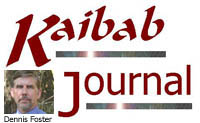|
|
|
||||||||||||||||||||||||||||
|
Grand Canyon Parking: A Common Sense Solution to Everyday Problems page 3 |
|||||||||||||||||||||||||||||
|
|
|||||||||||||||||||||||||||||
|
Based
on the parking demand forecast by the park service for 2010, and the
concurrent expected visitation level, it appears that 7,500 spaces can
accommodate between 8 and 10 million visitors a year. There are, at
least, four considerations that would lead one to argue that the
sustainable visitation level is towards the upper end of this range: 1. Bus travel to the canyon has been continually growing since the mid 1970s. It now accounts for about 25% of all visitors to the South Rim. 2. Air travel to the canyon continues to grow. These travelers are, by and large, bus visitors at the canyon. 3. Rail travel to the canyon continues to grow. Even if the proposed express rail service doesn’t materialize, this transportation mode is likely to continue to be used by more visitors every year. 4.
Visitor accommodations continue to grow in Tusayan and a shuttle service
has developed to serve that community. It is quite likely that many
visitors may be enticed to leave their vehicles here while visiting the
rim. It is
easy to argue that the number of visitors which can be sustained by
parking for 7,500 vehicles is likely to be closer to 10 million than to 8
million. Still, we still would like to have some estimate for how
long it would take to reach those visitation levels. If we focus
only on the more conservative 8 million figure, we can calculate how many
years it would take to reach this number, assuming differing growth rates
in annual visitation. If we start with the park visitation in 2003
of 4.46 million, and use 88% as the proportion that visit the South Rim [1],
the following table shows how many years it would take to reach 8 million
visitors at various growth rates [2].
Note
that the Park Service has used 2.5% as the average annual growth in
visitation as their baseline consideration throughout the GMP process and
beyond. However, the net growth in visitation from 1993 to 2003 was
zero. It peaked in 1997 at about 4.8 million visitors. Therefore,
it appears that the level of parking proposed here would likely be
sufficient for visitation for anywhere from 30 years to 50 years into the
future, if annual visitation growth lies between 1.5% and 2.5% per year.
Presumably, travel patterns will continue to change over this time frame.
It cannot now be forecast what the range of appropriate responses might be
to these future visitation level. It should be further noted that
the original parking demand shown in the Draft GMP were tied to peak use
demand. So, the parking levels discussed here apply to that
circumstance. If visitation smoothes out over the year, these spaces
can serve a higher annual visitor count for a longer time period. If
visitation remains as peaked as it is now, then even when these number of
spaces become insufficient to accommodate the peak demand, they should be
sufficient to accommodate off-peak demand (anywhere from 6 months to 10
months of the year) for many years after the dates shown in Table
1. The
role for transit at Grand Canyon This
proposal is primarily concerned with providing more parking spaces in the
Village area, to better promote the quality of the visitor’s experience
at Grand Canyon. This does not mean that some form of transit would
be inappropriate. Far from it. It is quite likely that this
proposal will work best if a concurrent shuttle system continues to serve
the Village area. In this way, visitors can decided to leave their
vehicles in one place and use a shuttle to transport to/from the major
visitation areas – Mather Point, the Business Center and the historic
Village. This transit system can benefit from improved vehicles,
improved service and improved transit infrastructure, which can easily be
paid for by existing fee demonstration moneys. In addition, an
improved (voluntary) transit service from Tusayan into the park would
further facilitate visitor flow in the Village area and improve upon the
visitor’s experience. Some
final caveats The
author has not attempted to ascertain the costs associated with this
proposal. However, the issue is moot in the sense that this level of
parking will be provided somewhere. Regardless of whether the NPS
adopts a rail or a bus system, parking to accommodate Grand Canyon
visitors will have to be built. With this proposal for additional
capacity in the park, with convenient access to the rim, there is no need
for the huge commitment of time, energy, resources and money for a rail
system as was being pursued by park officials. To date, Grand Canyon
National Park has collected over $100 million in “fee demonstration”
monies, which would seem more than adequate to enhance the visitors’
experience without sacrificing their convenience and adding to their
frustration. [1]
That is, excluding visitors to Lees Ferry, the North Rim, and, other,
more isolated parts of the park. |
|||||||||||||||||||||||||||||
|
|
|||||||||||||||||||||||||||||

